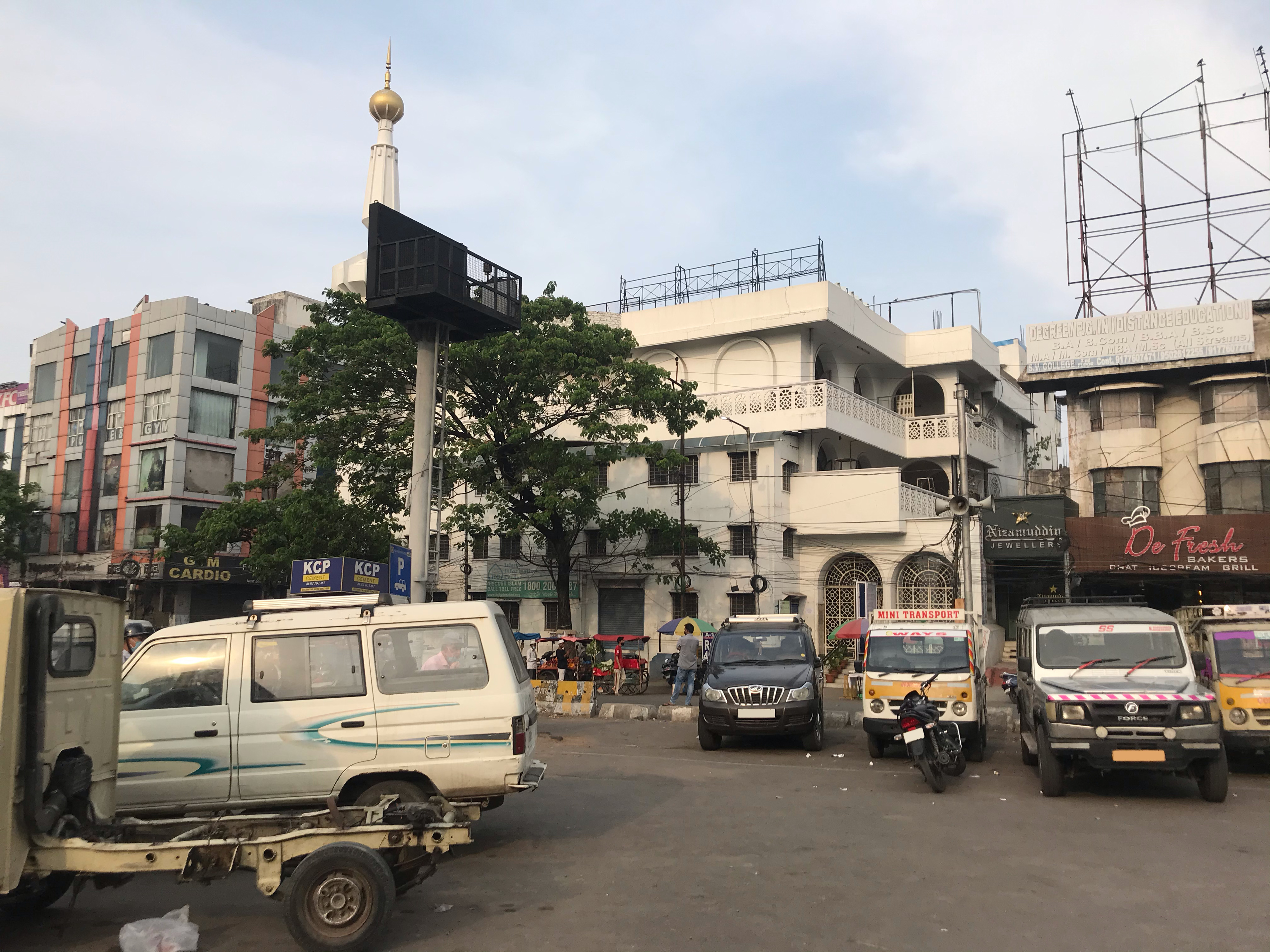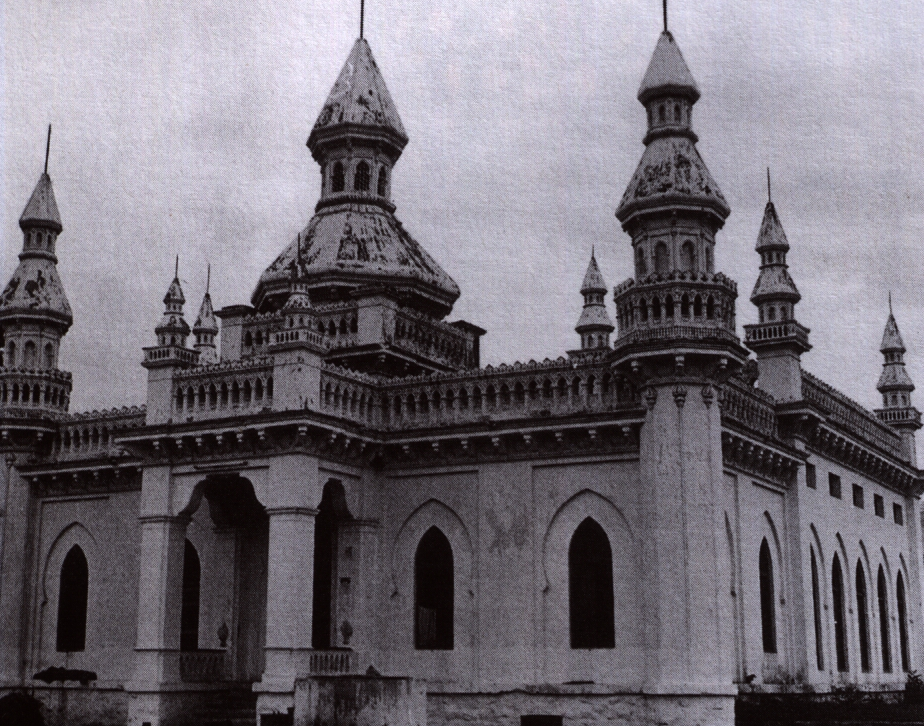|
List Of Mosques In Telangana
This is a list of mosques in Telangana, that date from the 14th century. The earliest mosques in the region were built during the short-lived reign of the Delhi Sultanate, established after the Siege of Warangal (1323), defeat of the Kakatiya dynasty, Kakatiya kingdom. These were often built with the ruins of desecrated Hindu temples, such as the Deval Masjid. The majority of mosques are located in the Telangana capital city of Hyderabad. History In 1518, Quli Qutb Shah, Quli Qutb-ul-Mulk established the Qutb Shahi dynasty and rebuilt the fortress of Golconda. He also commissioned the Jama Mosque, Golconda, Jama Mosque, which is the oldest surviving mosque in Hyderabad. Successive Qutb Shahi rulers would patronize the construction of several elaborate mosques built in the Qutb Shahi architecture, distinctive style that evolved during this period. Muhammad Quli Qutb Shah established the city of Hyderabad in 1591, which would grow to encompass Golconda. He built the Charminar ... [...More Info...] [...Related Items...] OR: [Wikipedia] [Google] [Baidu] |
Musheerabad Mosque
The Musheerabad Mosque, also known as the ''Masjid e Kalan'', and as the ''Musheerabad Badi Masjid'', and as the ''Jama Masjid Musheerabad'', is a mosque located in the Musheerabad locality of Hyderabad, in the Hyderabad district of the state of Telangana, India. The original portion was constructed in 1560 CE by Ibrahim Quli Qutb Shah, the fourth Sultan of the Qutb Shahi dynasty and is identical to the Hayat Bakshi Mosque located in Hayathnagar area of Hyderabad. Overview After the fall of Golconda, the mosque went into disuse and remained abandoned till the area became a ''jagir'' of Nawab Arastu Jah, the Prime Minister during the reign of Nizam Ali Khan. It was also repaired in 1951. Today, the old structure is in a dilapidated state. A new four-storied portion has been constructed to accommodate the ''namazis''. There used to be a large courtyard where the new portion stands today. The mosque was completed in the Qutb Shahi style and has five lofty arches and two min ... [...More Info...] [...Related Items...] OR: [Wikipedia] [Google] [Baidu] |
Jama Masjid, Hyderabad
The Jama Masjid is a Friday mosque located in Hyderabad, in the Hyderabad district of the state of Telangana, India. It is situated to the northeast of the Charminar at a short distance, approached by a narrow lane. It was built in 1597–98, around the same time as the founding of Hyderabad, and was one of the first mosques to be built in the city. The mosque is located within a courtyard, which also contains a ''hammam'' and a cistern. Its façade contains seven arched entrances leading into the prayer-hall, and is flanked by two minarets. The inscriptions located on the exterior and within the interior of the mosque are considered to be of high artistic merit. It can accommodate approximately 750 worshippers. Background The city of Hyderabad was established in the late 16th century by Muhammad Quli Qutb Shah, the fifth sultan of the Golconda Sultanate. The Jama Masjid was built in 1597–98, and was the first mosque to be built in Hyderabad after the mosque on the first f ... [...More Info...] [...Related Items...] OR: [Wikipedia] [Google] [Baidu] |
Qutb Shahi Tombs
The Qutub Shahi tombs are a series of Islamic tombs and mosques built by the various kings of the Qutb Shahi dynasty, Qutub Shahi dynasty, located in the Ibrahim Bagh (garden precinct), close to the famous Golconda Fort in Hyderabad, India, Hyderabad, in the Hyderabad district, India, Hyderabad district of the state of Telangana, India. A stunning and concentrated example of Indo-Islamic architecture, Indo-Islamic and Qutb Shahi architecture, Qutb Shahi architecture, the galleries of the smaller tombs are of a single storey while the larger ones are two-storied. In the centre of each tomb is a sarcophagus which overlies the actual burial vault in a crypt below. The domes were originally overlaid with blue and green tiles, of which only a few pieces now remain. The tomb complex forms part of the Golkonda Fort, Fortifications, a List of Monuments of National Importance in Telangana, Monument of National Importance, administered by the Archaeological Survey of India. In 2014, UN ... [...More Info...] [...Related Items...] OR: [Wikipedia] [Google] [Baidu] |
Hayat Bakshi Mosque, Hayathnagar (cropped)
The Hayat Bakshi Mosque also Hayat Bakshi Begum Masjid is a mosque located in Hayathnagar, near Hyderabad, in the Hyderabad district of the state of Telangana, India. It was constructed in 1672 during the reign of Abdullah Qutb Shah the fifth Sultan of Golconda, and named after Hayat Bakshi Begum. Architecture The mosque is built in typical Qutb Shahi style; with the Sarai, a rest house for the weary travellers. The façade features five arches, two minarets as well as a frieze and parapet which runs around the twelve-sided arcaded galleries protruding from the corner minarets. The prayer hall is set on a raised platform. Toward the eastern side of the platform and below the mosque is an ablution tank. The large complex occupies nearly . The caravan sarai (rest house) is a courtyard. This guest house is said to have 130 rooms. Hathi Bawli (meaning well of elephant), is a very large well on the north-east of the mosque. Controversy In May 2009, the archaeology and museums ... [...More Info...] [...Related Items...] OR: [Wikipedia] [Google] [Baidu] |
Azizia Masjid, Hyderabad
The Azizia Masjid, also known as the Majid-e-Azizia (; ; ) is a Friday mosque, located in Mehdipatnam, in the Hyderabad district of the state of Telangana, India. It is the largest mosque in Mehdipatnam with a capacity of over 10,000 people. The mosque was built in 1966 and the building has four floors that, in a addition to the mosque, also contains the headquarters of the Students Islamic Organization of India and the Islamic Center of Jamaat-e-Islami Hind. History The foundation stone was laid in 1966 by Abdul Hafeez Khan, and he named the mosque Azizia, after his father's name, Abdul Azeez. Facilities Religious This mosque is the largest mosque in Mehdipatnam with four floors that can accommodate over 10,000 worshippers. It has a Wudu Khana (Ablution Center) on every floor. It holds the Friday Jumma prayers every week and the sermons (bayan) is delivered by Aijaz Mohiuddin Waseem which focuses on current and contemporary socio-economic issues based on the Quran ... [...More Info...] [...Related Items...] OR: [Wikipedia] [Google] [Baidu] |
Afzal Gunj Mosque, Hyderabad
Afzal may refer to: Places in Iran * Afzal, Iran, a village * Chah Afzal, Yazd, a village People First name *Afzal Ansari (born 1953), Indian politician *Afzal Hossain (born 1954), Bangladeshi actor, director, writer and painter *Afzal Khan (British politician) (born 1958), British Labour Party politician *Afzal Khan (general) (died 1659), a medieval Indian commander *Afzal Khan (actor), better known as John Rambo, Pakistani actor and comedian * Afzal Kahn (automotive designer), British automotive designer * Afzal Guru or Mohammad Afzal, (1969–2013), a Kashmiri terrorist, who was convicted for his role in the 2001 Indian Parliament attack *Afzal Ahmed Khan, Indian film director and producer * Afzal Khokhar (born 1974), Pakistani politician * Afzal Ahmed Syed, Urdu poet and translator *Afzal Sharif, Bangladeshi television and film actor * Afzal Tahir, (born 1949), Pakistani admiral, writer and military historian * Afzal Yusuf, Indian music composer in the South Indian film ... [...More Info...] [...Related Items...] OR: [Wikipedia] [Google] [Baidu] |
Moorish Architecture
Moorish architecture is a style within Islamic architecture that developed in the western Islamic world, including al-Andalus (the Iberian Peninsula) and what is now Morocco, Algeria, and Tunisia (part of the Maghreb). Scholarly references on Islamic architecture often refer to this architectural tradition in terms such as architecture of the Islamic West or architecture of the Western Islamic lands. This architectural tradition integrated influences from pre-Islamic Roman, Byzantine, and Visigothic architectures, from ongoing artistic currents in the Islamic Middle East, and from North African Berber traditions. Major centers of artistic development included the main capitals of the empires and Muslim states in the region's history, such as Córdoba, Kairouan, Fes, Marrakesh, Seville, Granada and Tlemcen. While Kairouan and Córdoba were some of the most important centers during the 8th to 10th centuries, a wider regional style was later synthesized and shared across the Ma ... [...More Info...] [...Related Items...] OR: [Wikipedia] [Google] [Baidu] |
Spanish Mosque
The Spanish Mosque, also known as the ''Masjid Iqbal Ud Daula'' and the ''Jam e Masjid "Aiwan-E-Begumpet"'', is a mosque within Paigah Palace, in the Begumpet neighbourhood of Hyderabad, in the Hyderabad district of the state of Telangana, India. It is also known as the Mosque of the Moors, due to its unique Moorish Revival architectural style and is said to be one-of-its-kind in India. Architecture The construction of the mosque was started by the fifth Paigah Amir, H.E. Nawab Mohammed Fazaluddin Khan, Iqbal Ud Daula, Sir Viqar-ul-Umra in 1900 (due to his sudden demise in 1902) and completed by his heir and elder son H.E Nawab Sultan Ul Mulk Bahadur, VI Amir of Paigah through Princess Jahandarunissa Begum, Lady Vicar Ul Umra. After his return from Spain, Viqar-ul-Umra was very much inspired by the Cathedral–Mosque of Córdoba. The exterior and interior of the Spanish Mosque are mostly similar to the Cathedral–Mosque and Jama Masjid Gulbarga, in Karnataka, India. ... [...More Info...] [...Related Items...] OR: [Wikipedia] [Google] [Baidu] |
Chowk Ke Masjid
The Masjid-e-chowk, also known as ''Chowk Ke Masjid'' or ''Jama Masjid Chowk'', is a mosque located in the Mahboob Chowk Clock Tower, in Hyderabad, in the Hyderabad district of the state of Telangana, India. The mosque was constructed in 1817 by Khaja Abdullah Khan. The mosque was initially constructed with a three-arched façade. Later four arches were added by extending the structure and the two minarets in the front of rectangular hall. See also * Islam in India * List of mosques in Telangana This is a list of mosques in Telangana, that date from the 14th century. The earliest mosques in the region were built during the short-lived reign of the Delhi Sultanate, established after the Siege of Warangal (1323), defeat of the Kakatiya dy ... References 19th-century mosques in India Mosque buildings with minarets in India Mosques completed in the 1810s Mosques in Hyderabad, India Religious buildings and structures completed in 1817 {{India-mosque-stub ... [...More Info...] [...Related Items...] OR: [Wikipedia] [Google] [Baidu] |


